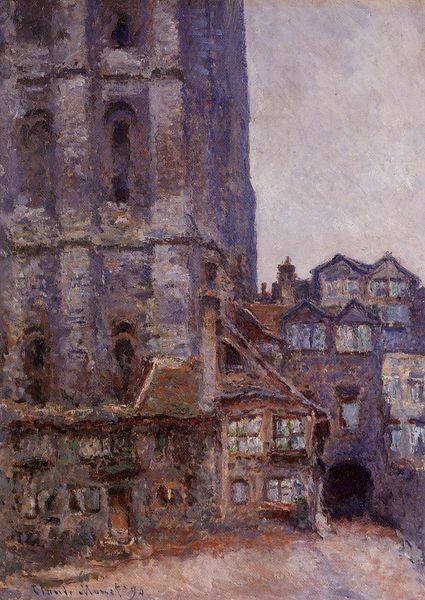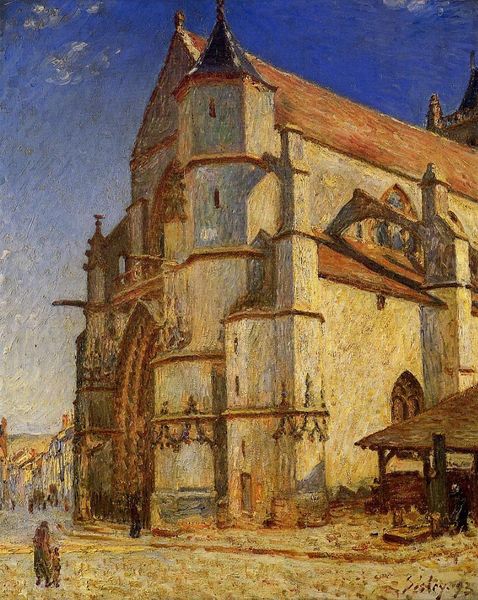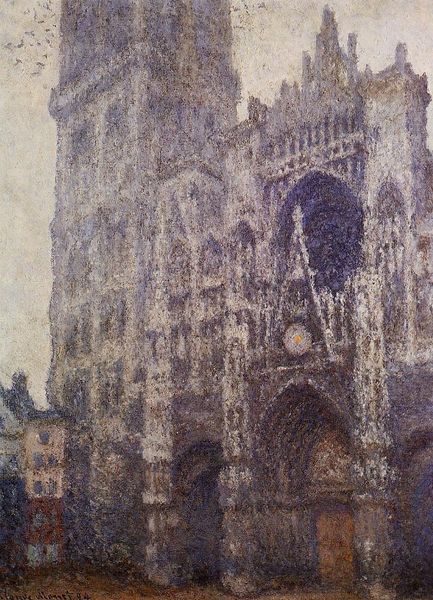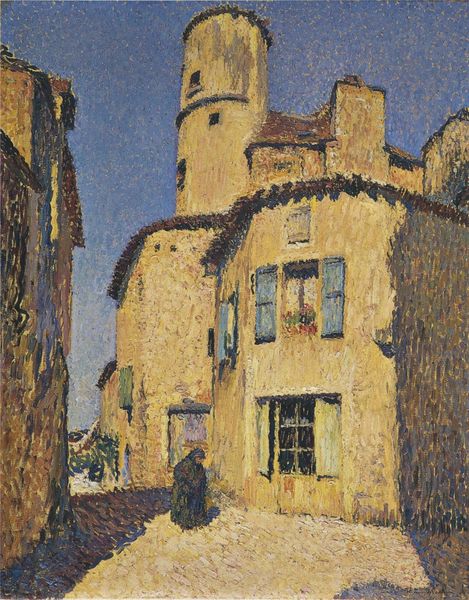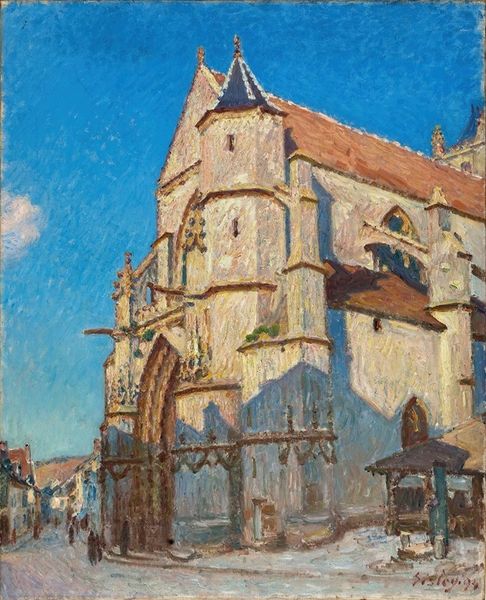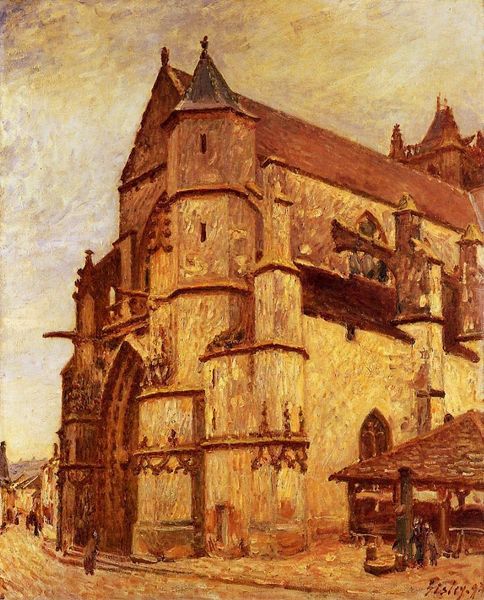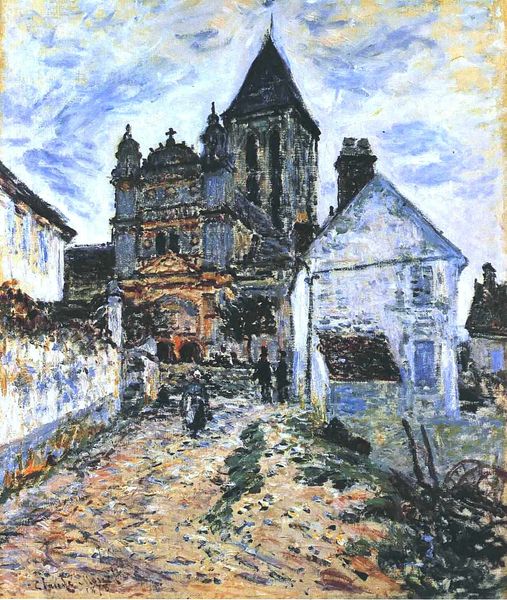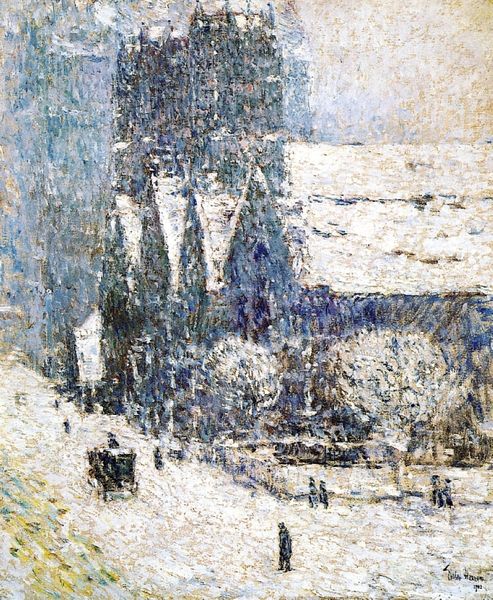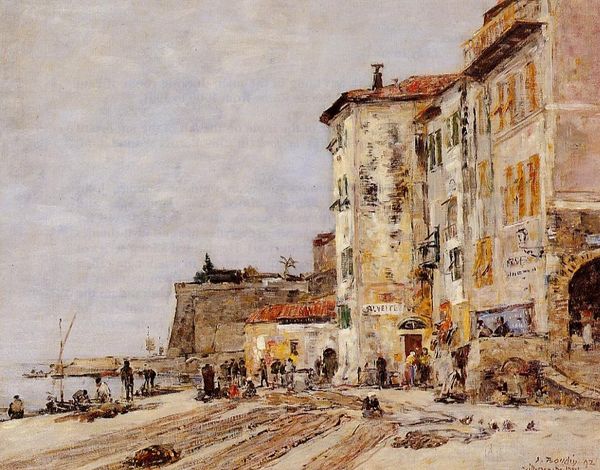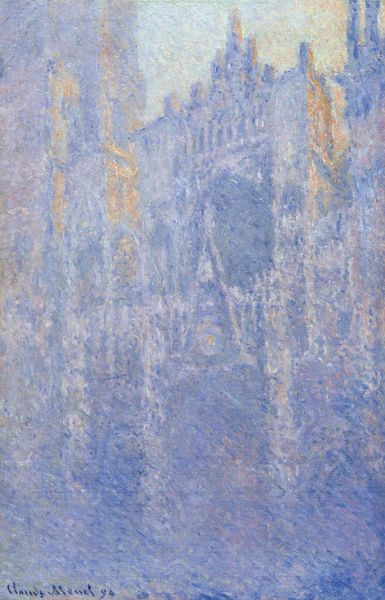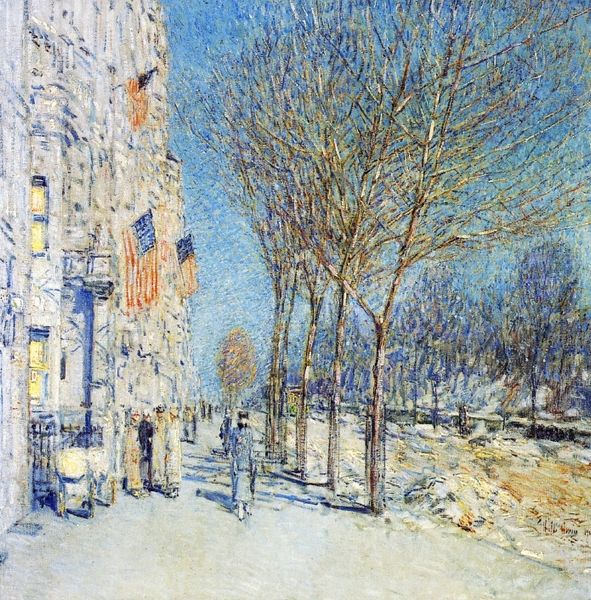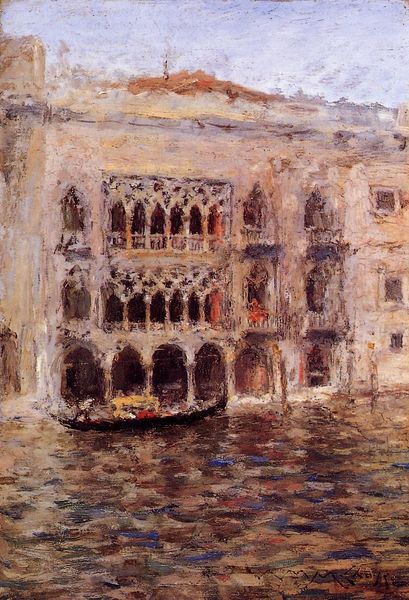
Copyright: Public domain
Editor: We’re looking at Monet’s "The Cour d'Albane," painted in 1892. It’s… awfully blue! Almost monochromatic. What jumps out at you when you see this cityscape? Curator: The pervasive blue unifies everything, doesn't it? Blue is so often tied to melancholy, but here, given the architectural subject, perhaps it speaks more to a sense of permanence and enduring cultural memory. The building looms. Do you get a sense that Monet isn’t just capturing a scene, but also an almost timeless monumentality? Editor: Yes, it does feel solid. It’s strange, because I think of Impressionism as fleeting moments, but you’re right, this feels like something meant to last. Is there anything else about the symbolism here? Curator: Well, think about the architecture itself. Cathedrals and civic buildings act as repositories of cultural identity. Monet, by focusing on these structures, taps into a collective consciousness. Even the play of light – Impressionism’s hallmark – can be interpreted as the ephemeral interacting with the eternal. The small buildings add another layer. Do they remind you of anything? Editor: Hmm, they give context to the building behind; the cathedral is still there amongst the present. Curator: Precisely! They are a constant reminder of humanity’s presence and its relationship with history, memory and its place in a bigger system. It's an ongoing dialogue across time. Editor: I never would have considered those meanings! It's much more than just a blue building! Curator: Indeed! It’s how images can operate as potent symbols, connecting us to history, to culture, and to each other.
Comments
No comments
Be the first to comment and join the conversation on the ultimate creative platform.
